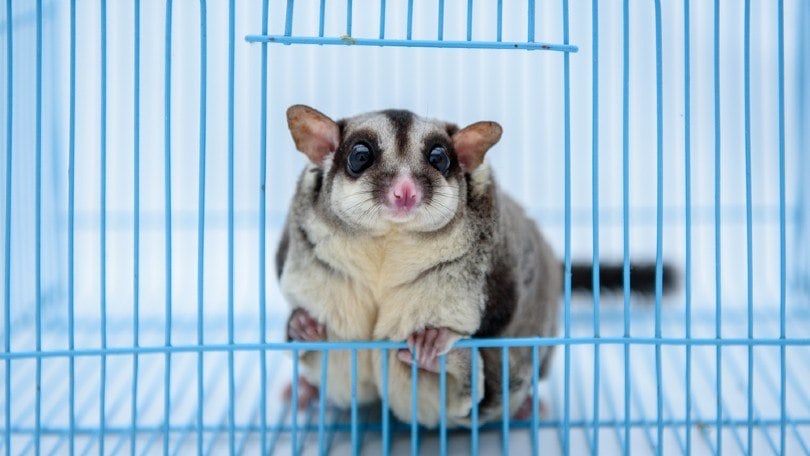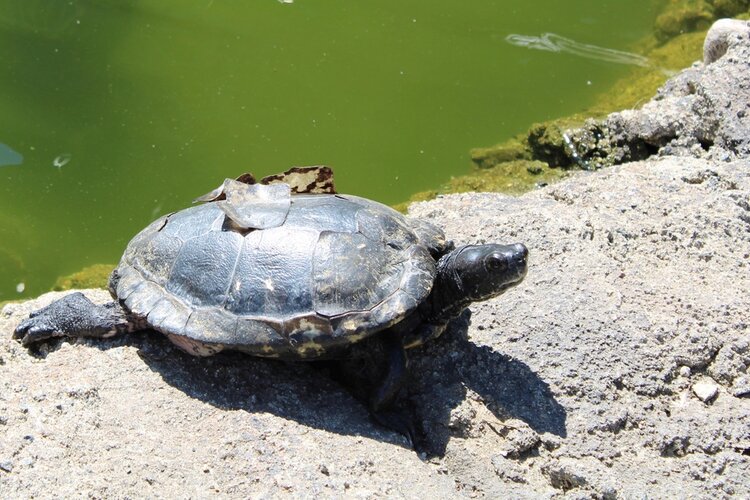Click to Skip Ahead
A sugar glider is just a tiny thing, fitting ever-so-perfectly into your palm. But don’t let their smallness fool you! These little marsupials are master jumpers, gliding their way across wooded areas from tree to tree. As pets, they need a cage that enables them to freely flit around without too much restriction. In fact, their livelihood depends on it.
So, when you’re browsing through options trying to find the best sugar slider cage, you should know what you should be looking for. You may have many questions, but don’t worry! We covered all the basics on how to choose the right cage for your pets here.
The quick answer is that each pair of sugar gliders should have a cage that’s at least 24” D x 24” W x 36” H, and the bars should not be more than 1/2 inch apart.
Important Sugar Glider Facts
When it comes to exotic pets, there’s no wonder that sugar gliders have increased in popularity since the 1990s. These marsupials are tiny and adorable, and they can make rewarding companions (if given the right care).
But these aren’t easy pets either. They require specific care, including the proper diet, environment, and outside stimuli. Many people might think that they can put these critters in a small cage that matches their size. That isn’t the case at all. They aren’t called “gliders” for no reason.
In the wild, sugar gliders soar from trees and branches. So, you can see why a small cage wouldn’t make them happy. They need an enclosure with enough room to move as freely as possible.
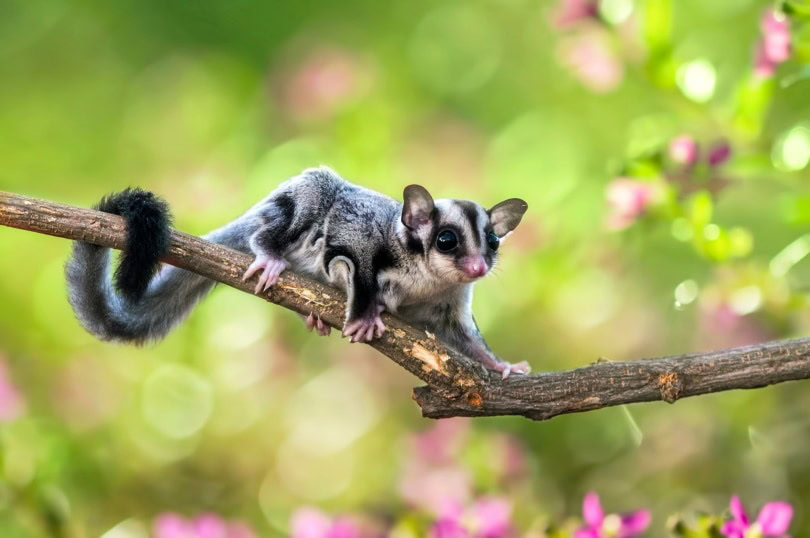
Sugar Gliders Must Be Kept in Pairs
If you’ve thought of having a solo sugar glider, think again. These animals are highly social, depending on their species for support and affection.
You need at least a pair of sugar gliders. But you can get up to even three or four. You must have the appropriate space, though, which will increase with the number of gliders you have. So, before you commit, think about whether you have the available home space for a cage of that caliber.
The 4 Important Factors in Determining Cage Size for Sugar Gliders
1. Ideal Cage Shape
Sugar gliders are short-legged but their cage should be tall. Most compatible cages sit up off the ground and have multiple levels. Gliders should be able to move around the cage at will. So, after you get their hammocks and hiding spaces put in, make sure your cage still has enough wiggle room.
There are several enclosures designed for animals like sugar gliders, but you might also find that many bird cages are solid options too—depending on the setup, of course. Remember to read carefully before you buy so you can find the perfect spot in your home.
2. Ideal Cage Dimensions
Dimensions are probably the most crucial part of the process. Bigger cages are better but height is even more important. Sugar gliders need a tall, wide cage—at the very least, 24” D x 24” W x 36” H. Bar spacing shouldn’t exceed 1/2 inch.
Multi-levels are okay, but make sure they aren’t too restrictive. The sugar gliders need room inside of the cage to get from one side to the other with no help from platforms, unlike some other creatures that need them for climbing.
Many enclosures come with removable levels that you can take out or place where you want them.
3. Important Cage Safety Features
Sugar gliders can be quite the escape artists. They are small and more than able to squeeze through thin spaces. The idea of one (or many!) getting loose without your knowledge can be dangerous. They might be hard to find, fall prey to another household pet, or even be squished!
Multi-level cages have different entry and exit points. Some doors are the height of the cage and swing open fully. Others have two meeting doors that latch in the center. Still others have small entry points that snap shut. Large cages usually have big gaps in bar spacing. While that might work for some pets, your sugar glider isn’t one of them.
Depending on the cage, it might have sides that snap or latch together. While you can work with this, remember that your sugar glider climbs a lot. You don’t want any tiny spaces where they can pinch their toes or fingers.
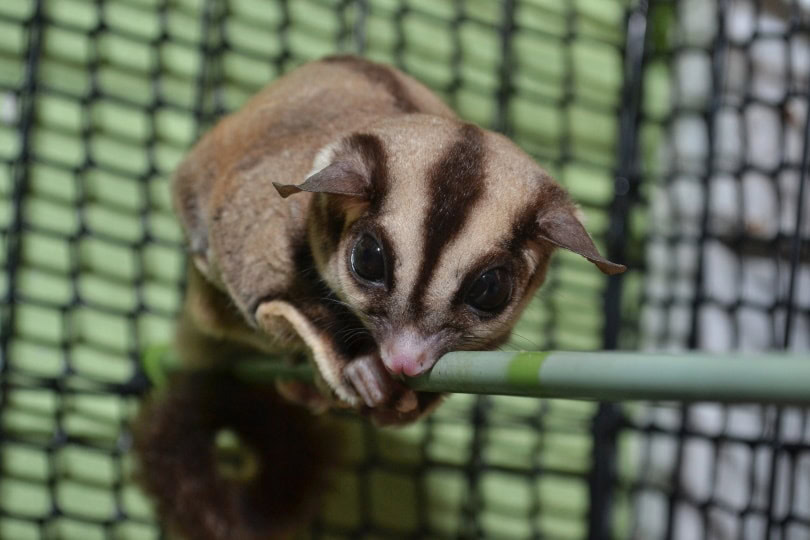
4. Cage Accessories
Another reason that sugar gliders need a tall cage is their accessories. Gliders love hiding, so make sure their cage is generously decorated with hammocks and hiding spots of all kinds. You won’t want to have too many obstructions in the cage, though.
Hammocks and hiding spots generally work best in the top and bottom portions of the cage. These spaces give your glider somewhere to relax, rest, and hide. Sugar gliders might also like running wheels to get out a little energy. Most wheels can attach directly to the cage, keeping it up against one side so you can create openness.
No matter how you spruce the cage up, make sure it accommodates all your planned additions.
FAQ
Should sugar gliders be kept in pairs?
In the wild, sugar gliders live in large colonies of between six and 10 members. Due to their highly social nature, you must have at least a pair of sugar gliders, if not more. Like many exotic pets, if they’re in solitude, they can get lonely and depressed and exhibit poor behavior.
How much space does each sugar glider need?
Two sugar gliders should have a space that is at least 24” D x 24” W x 36” H.
Can I have more than two sugar gliders in one cage?
Permitting that the cage is big enough, you can have more than two sugar gliders in one cage. Just remember that even though they are tiny, they need lots of room to move around freely.
Can I let my sugar gliders free in my home all day?
While you should get your sugar glider out for a lot of floor playtime, you shouldn’t leave them out unattended. Even though they would appreciate the space, they are too small and the risks are too high.
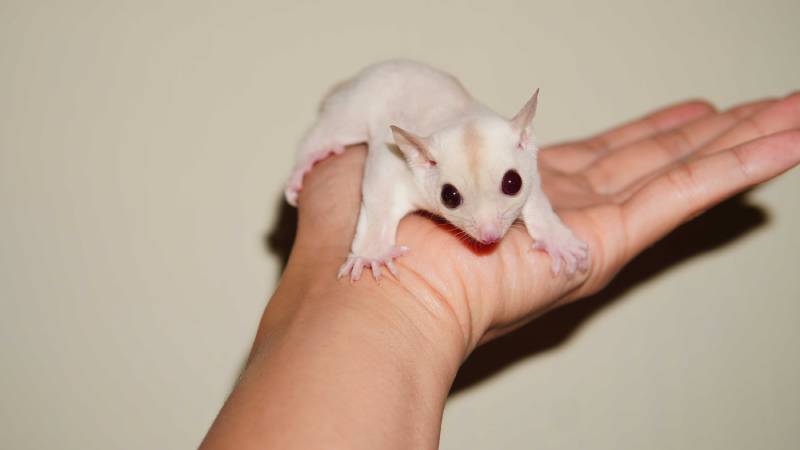
Can I use a hamster, guinea pig, or rabbit cage for my sugar glider?
Even though sugar gliders are small, they need lots of cage space. Unlike hamsters or guinea pigs, they need tall enclosures.
However, many bird cages might suffice, providing that it meets all other necessary criteria.

Summary
So, when you finally buy the cage of your choice for your sugar glider, you will know what to look for. Make sure the cage is longer vertically rather than horizontally, and never use a ground, singular-level cage for your pair. Safety is a must, so make sure there are no jagged edges or problem areas.
Also, decorate their cage with lots of exciting activities and napping areas. They need a space they can feel safe, comfortable, and at home in.
Featured Image: MARVIK, Shutterstock
